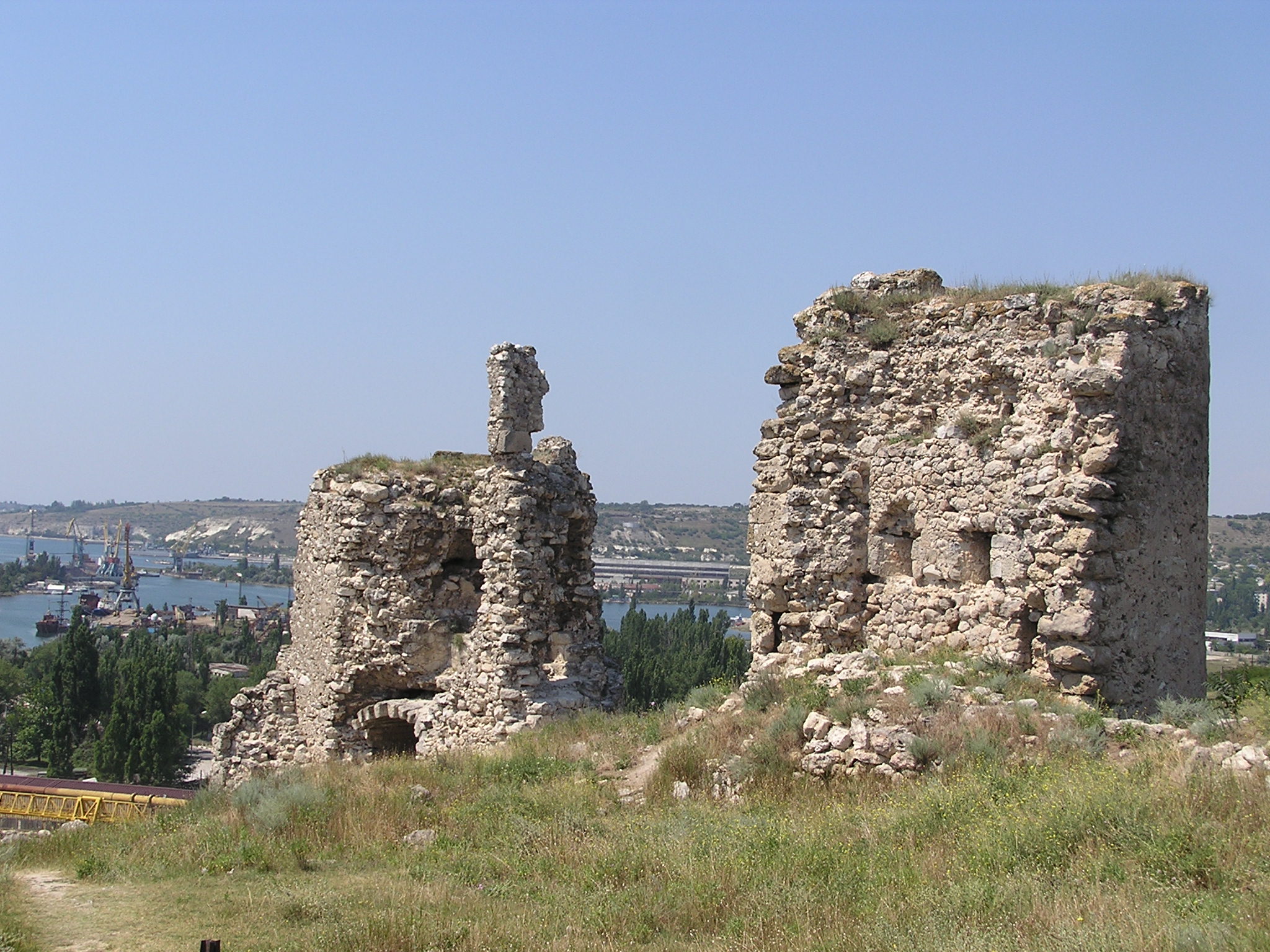|
Simeon Olelkovich
Simeon (Simon) Olelkovich ( be, Сямён Алелькавіч, uk, Семен Олелькович, russian: Семён Олелькович, lt, Simonas Olelkaitis; 1420–1470) was the last Prince of Kiev from 1454 to 1470 and the Prince of Slutsk from 1443 to 1455. A member of the Olelkovich family, he descended from Ruthenianized Eastern Orthodox branch of the Gediminids dynasty and was a great-grandson of Algirdas, the Grand Duke of Lithuania. After his father's death he inherited the Principality of Kiev. He conducted an independent policy, fought with the Crimean Tatars, maintained close ties with the Principality of Moldavia, the Genoese colonies and the Principality of Theodoro in the Crimea. However soon after, the Principality of Theodoro was conquered by the emerging Crimean Khanate. He married Maria (d. 1501), daughter of Jan Gasztołd, by whom he had three children, Vasily (d. 1595), Alexandra, wife oFedor Ivanovich Borovsky and Sophia (d. 1483), wife of Mikh ... [...More Info...] [...Related Items...] OR: [Wikipedia] [Google] [Baidu] |
Slutsk
Slutsk ( officially transliterated as Sluck, be, Слуцк; russian: Слуцк; pl, Słuck, lt, Sluckas, Yiddish/Hebrew: סלוצק ''Slutsk'') is a city in Belarus, located on the Sluch River south of Minsk. As of 2022, its population is 61,802. Slutsk is the administrative center of Slutsk District. Geography The city is situated in the south-west of its Region, north of Soligorsk. History Slutsk was first mentioned in writing in 1116. It was part of the Principality of Turov and Pinsk, but in 1160 it became the capital of a separate principality. From 1320–1330 it was part of the domain of the Grand Duchy of Lithuania. Later it was owned by the Olelkovich and Radziwiłł families, which transformed it into a center of the Polish Reformed Church with a gymnasium and a strong fortress. Following the 17th century, the city became famous for manufacturing kontusz belts, some of the most expensive and luxurious pieces of garment of the szlachta. Because of the p ... [...More Info...] [...Related Items...] OR: [Wikipedia] [Google] [Baidu] |
Principality Of Theodoro
The Principality of Theodoro ( el, Αὐθεντία πόλεως Θεοδωροῦς καὶ παραθαλασσίας), also known as Gothia ( el, Γοτθία) or the Principality of Theodoro-Mangup, was a Greek principality in the southern part of Crimea, specifically on the foothills of the Crimean Mountains. It represented one of the final rump states of the Eastern Roman Empire and the last territorial vestige of the Crimean Goths until its conquest by the Ottoman Empire by the Ottoman Albanian Gedik Ahmed Pasha in 1475. Its capital was Doros, also sometimes called Theodoro and now known as Mangup. The state was closely allied with the Empire of Trebizond. History In the late 12th century, the Crimean peninsula had seceded from the Byzantine Empire, but soon after the sack of Constantinople in 1204 parts of it were included in the Trapezuntine '' Gazarian Perateia''. This dependence was never very strong and was eventually replaced by the invading Mongols, who in 1238 p ... [...More Info...] [...Related Items...] OR: [Wikipedia] [Google] [Baidu] |
People From Slutsk
A person ( : people) is a being that has certain capacities or attributes such as reason, morality, consciousness or self-consciousness, and being a part of a culturally established form of social relations such as kinship, ownership of property, or legal responsibility. The defining features of personhood and, consequently, what makes a person count as a person, differ widely among cultures and contexts. In addition to the question of personhood, of what makes a being count as a person to begin with, there are further questions about personal identity and self: both about what makes any particular person that particular person instead of another, and about what makes a person at one time the same person as they were or will be at another time despite any intervening changes. The plural form "people" is often used to refer to an entire nation or ethnic group (as in "a people"), and this was the original meaning of the word; it subsequently acquired its use as a plural form of pe ... [...More Info...] [...Related Items...] OR: [Wikipedia] [Google] [Baidu] |
Burials At Kyiv Pechersk Lavra
Burial, also known as interment or inhumation, is a method of final disposition whereby a dead body is placed into the ground, sometimes with objects. This is usually accomplished by excavating a pit or trench, placing the deceased and objects in it, and covering it over. A funeral is a ceremony that accompanies the final disposition. Humans have been burying their dead since shortly after the origin of the species. Burial is often seen as indicating respect for the dead. It has been used to prevent the odor of decay, to give family members closure and prevent them from witnessing the decomposition of their loved ones, and in many cultures it has been seen as a necessary step for the deceased to enter the afterlife or to give back to the cycle of life. Methods of burial may be heavily ritualized and can include natural burial (sometimes called "green burial"); embalming or mummification; and the use of containers for the dead, such as shrouds, coffins, grave liners, and ... [...More Info...] [...Related Items...] OR: [Wikipedia] [Google] [Baidu] |


_1938.jpg)
